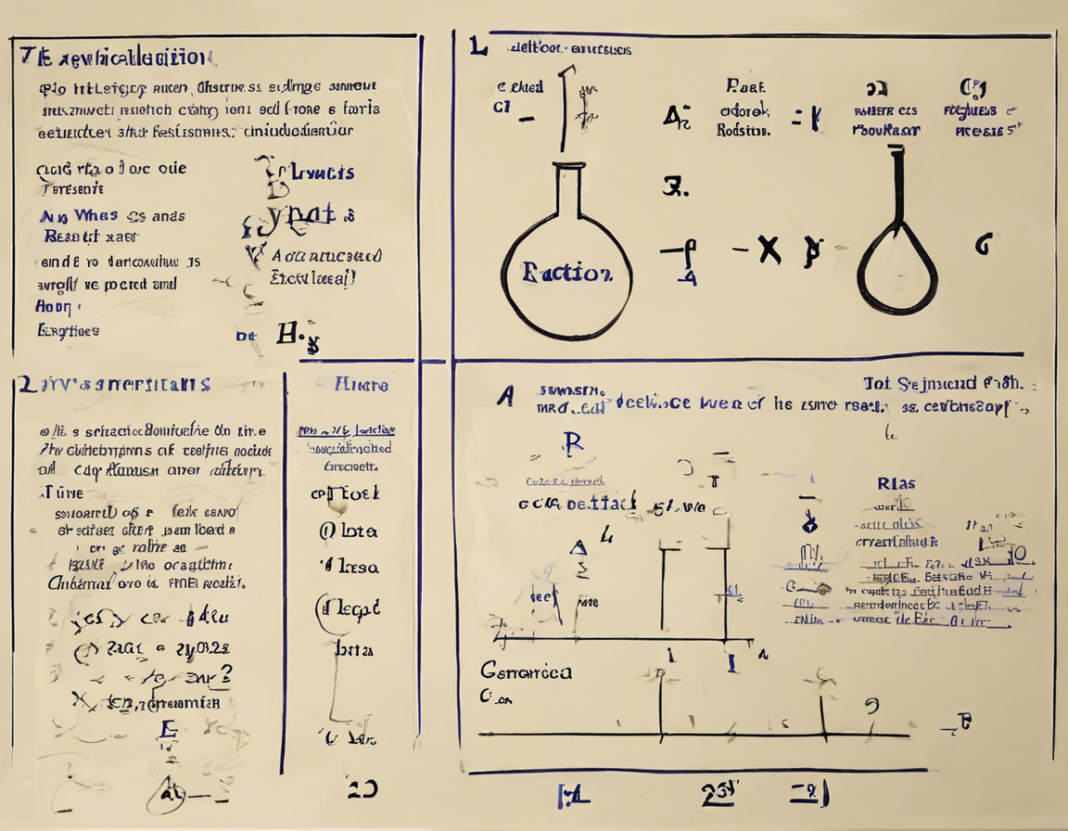When it comes to understanding chemistry, one of the fundamental skills that every student needs to master is balancing chemical equations. Balancing chemical equations is essentially the process of ensuring that there are an equal number of each type of atom on both the reactant and product sides of a chemical equation. This process is crucial because it abides by the law of conservation of mass, which states that matter cannot be created or destroyed in a chemical reaction. In this comprehensive guide, we will delve into the factors that govern the balancing of chemical equations.
Understanding the Basics
Before diving into the factors involved in balancing chemical equations, let’s first establish some basic principles. A chemical equation typically consists of two parts: the reactants (substances that undergo a chemical reaction) and the products (substances that are formed as a result of the chemical reaction). The equation is usually represented in the form:
Reactants → Products
An example of a simple chemical equation is the reaction between hydrogen gas (H2) and oxygen gas (O2) to form water (H2O):
H2 + O2 → H2O
Factors to Consider
1. Coefficients
Coefficients are the numbers placed in front of formulas in a chemical equation to ensure that the same number of each type of atom is present on both sides of the equation. These numbers indicate the ratio in which the reactants combine and the products are formed. It is essential to note that coefficients only affect the formulas immediately following them.
2. Types of Atoms
When balancing a chemical equation, you must consider the different types of atoms present in the reactants and products. Start by balancing atoms that are present in only one reactant and one product, then move on to more complex atoms that appear in multiple reactants or products.
3. Polyatomic Ions
Polyatomic ions are charged particles that contain two or more covalently bonded atoms. When balancing chemical equations involving compounds with polyatomic ions, treat the entire polyatomic ion as a single unit and balance it as such.
4. Balancing Charges in Ionic Compounds
In ionic compounds, it is crucial to balance the total positive and negative charges on both sides of the equation. This ensures that the overall charge is conserved in the reaction.
Step-by-Step Guide to Balancing Chemical Equations
Now that we’ve outlined the key factors to consider when balancing chemical equations, let’s walk through a step-by-step guide to help you master this essential skill:
Step 1: Write Down the Unbalanced Equation
Begin by writing the unbalanced chemical equation, ensuring you have correctly identified the reactants and products involved in the reaction.
Step 2: Balance the Least Abundant Element
Identify the least abundant element in the equation and balance it by adjusting the coefficients of the compounds containing that element.
Step 3: Balance Hydrogen and Oxygen Atoms
Next, balance hydrogen and oxygen atoms, as they are commonly present in chemical reactions and can affect the overall balance of the equation.
Step 4: Check and Adjust Coefficients as Needed
After balancing the individual elements, go back and check to ensure that all elements are balanced. Make any necessary adjustments to the coefficients to achieve balance.
Step 5: Verify the Overall Balance
Once you have balanced all elements, verify that the total number of atoms of each element is the same on both sides of the equation. Additionally, check that the total charge is balanced for ionic compounds.
By following these steps and considering the factors outlined above, you can effectively balance chemical equations and showcase a deep understanding of chemical reactions.
Common Challenges and Tips
Balancing chemical equations can pose challenges due to the complexity of reactions and the variety of compounds involved. Here are some common difficulties students face and tips to overcome them:
Challenge: Complex Reactions
Complex reactions involving multiple reactants and products can make balancing equations more challenging.
Tip: Break It Down
Break down complex reactions into smaller steps by focusing on balancing one element at a time. This approach can simplify the process and prevent errors.
Challenge: Fractional Coefficients
Sometimes, balancing equations may result in fractional coefficients, which are not commonly used in chemical equations.
Tip: Multiply by a Common Denominator
To eliminate fractional coefficients, multiply all coefficients by a common denominator that will result in whole number coefficients without altering the balance of the equation.
Challenge: Forgetting Polyatomic Ions
Students may overlook polyatomic ions when balancing equations, leading to imbalances in the overall equation.
Tip: Treat Polyatomic Ions as Units
Remember to treat polyatomic ions as single units when balancing equations, rather than breaking them down into individual atoms.
Frequently Asked Questions (FAQs)
1. What is the importance of balancing chemical equations?
Balancing chemical equations ensures that the law of conservation of mass is obeyed, demonstrating the preservation of matter in a chemical reaction.
2. Can a chemical equation be considered balanced if the number of atoms is equal on both sides?
No, in addition to the number of atoms being equal, the charges must also be balanced for ionic compounds to consider the equation balanced.
3. How do you handle elements that appear in multiple reactants or products?
Balance elements that appear in multiple reactants or products by adjusting coefficients for the compounds containing those elements until all elements are balanced.
4. What are some strategies for balancing complex chemical equations?
Break down complex equations into smaller steps, balance one element at a time, and focus on balancing atoms that appear in a single reactant and product before moving on to more complex atoms.
5. Can coefficients in a balanced chemical equation be simplified?
Yes, coefficients in a balanced chemical equation can be divided by a common factor to simplify the equation while maintaining its balance.
In conclusion, balancing chemical equations is a fundamental skill in chemistry that requires attention to detail, understanding of key factors, and practice. By following the step-by-step guide, addressing common challenges, and staying mindful of important considerations, you can confidently balance chemical equations and enhance your comprehension of chemical reactions.






